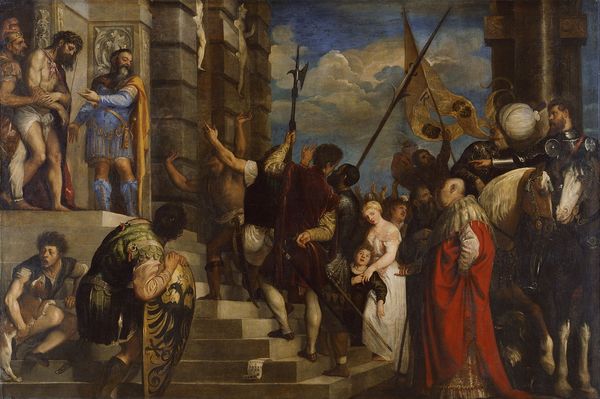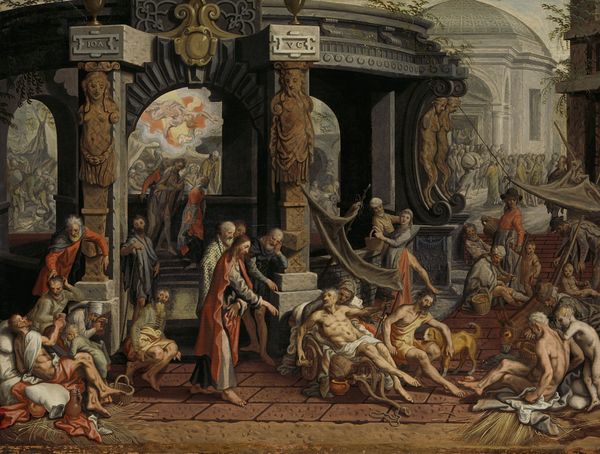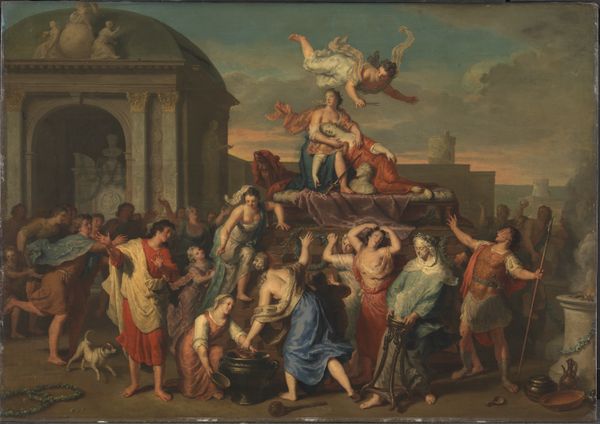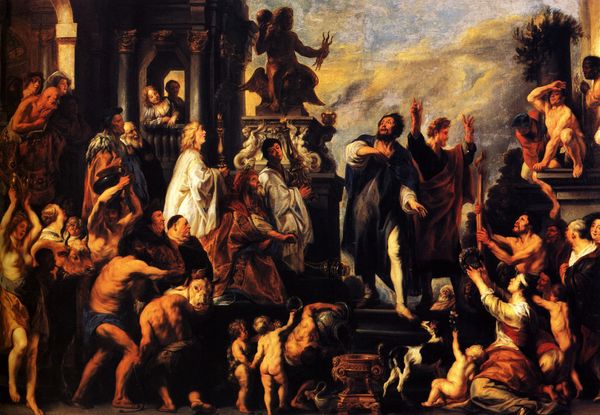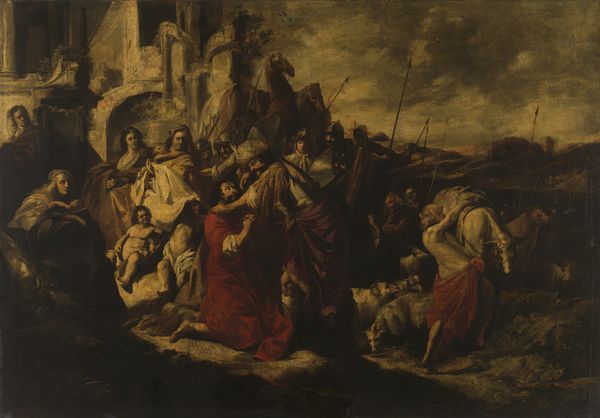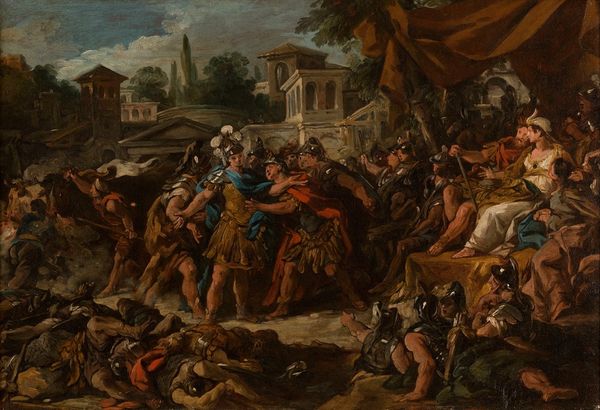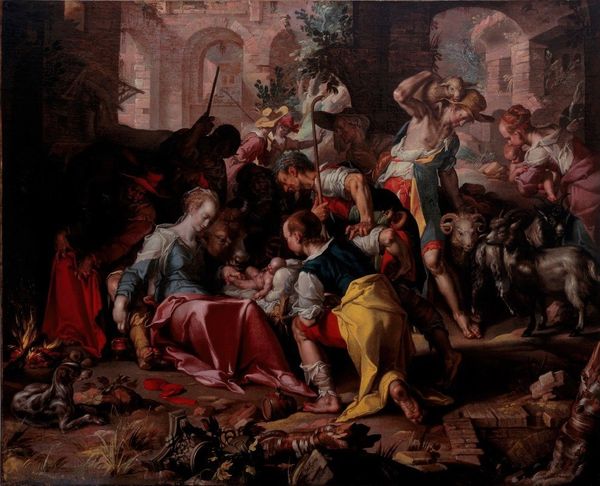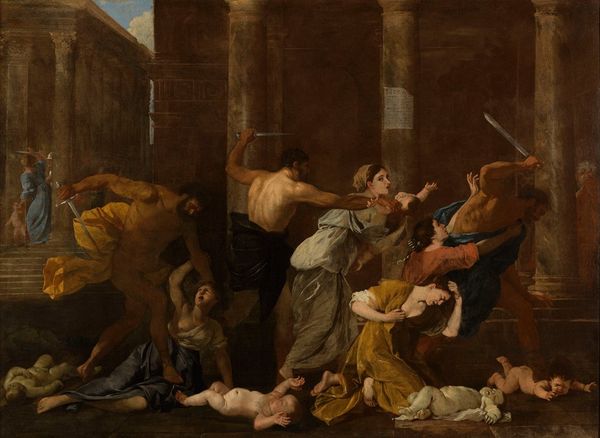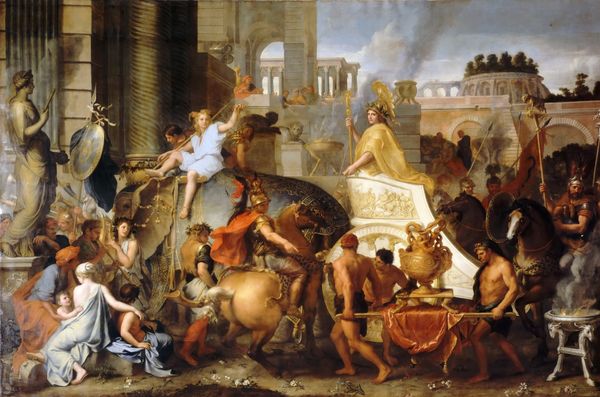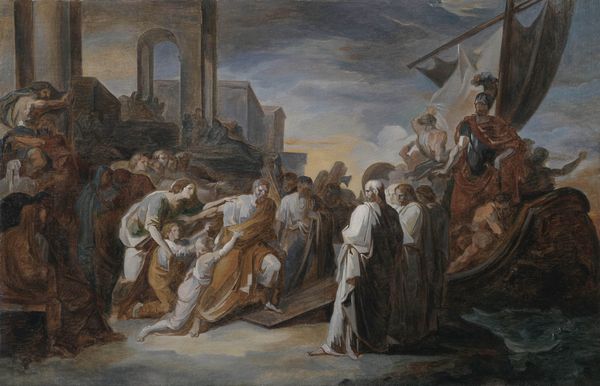
Theodosius Repulsed from the Church by Saint Ambrose 1700 - 1710
0:00
0:00
oil-paint, oil-on-canvas
#
portrait
#
gouache
#
baroque
#
oil-paint
#
figuration
#
oil painting
#
history-painting
#
oil-on-canvas
Dimensions: 61 1/8 × 84 1/16 in. (155.3 × 213.5 cm)
Copyright: Public Domain
Curator: Alessandro Magnasco created this compelling oil-on-canvas work, titled "Theodosius Repulsed from the Church by Saint Ambrose," sometime between 1700 and 1710. It now resides here at The Art Institute of Chicago. Editor: What immediately strikes me is the sheer theatricality of the scene, the intense dynamism rendered through oil paint, it’s almost visceral. It feels gritty, not pristine. Curator: It’s fascinating to consider the historical backdrop: Theodosius's massacre of thousands in Thessalonica, and Ambrose's subsequent act of barring him from the church until he repented. The power dynamics inherent in this scene really come alive here. The composition, to me, reads like a potent statement on the power of the church challenging imperial authority, it’s an explicit assertion of spiritual law over secular. Editor: The artist has certainly considered the construction of space here and I find that interesting. The columns frame the church, or are meant to frame, but this act of refusal disrupts the architecture by focusing attention instead on the saint. Curator: Absolutely, we are encouraged to ask: who dictates access to sacred spaces, and what moral responsibilities accompany worldly power? There’s a strong dialogue about social justice here, even across the centuries, one where vulnerability challenges strength. I keep seeing echoes of our modern social battles in this Baroque history painting. Editor: The gestures, though! Exaggerated, like actors on a stage. Notice too the materials presented to the viewer. There's flesh, fabric, and cold steel armor, with everything centered around Ambrose's vestments. One represents human failing and the other, moral fortitude. It’s almost operatic. Curator: And that central interaction, that pivotal moment between the emperor and the saint – isn't that a fascinating depiction of how personal repentance impacts broader systems of control? What do you think about how the fallen around the figures represent suffering? Editor: You are so right. Look how the suffering on the floor becomes the material upon which a judgement can then be made! In this, Magnasco brilliantly exposes how faith rests upon tangible suffering to make the powerful act just. Curator: I hadn’t thought of it that way, but it fits. Looking at "Theodosius Repulsed…" reminds me how urgent those dialogues of accountability still feel today. Editor: For me, I'm more focused on how Magnasco translated this scene into paint—it's the handling of the oil itself that truly grabs my attention; to that, history bows to human making, no matter how brutal the scene portrayed.
Comments
No comments
Be the first to comment and join the conversation on the ultimate creative platform.
